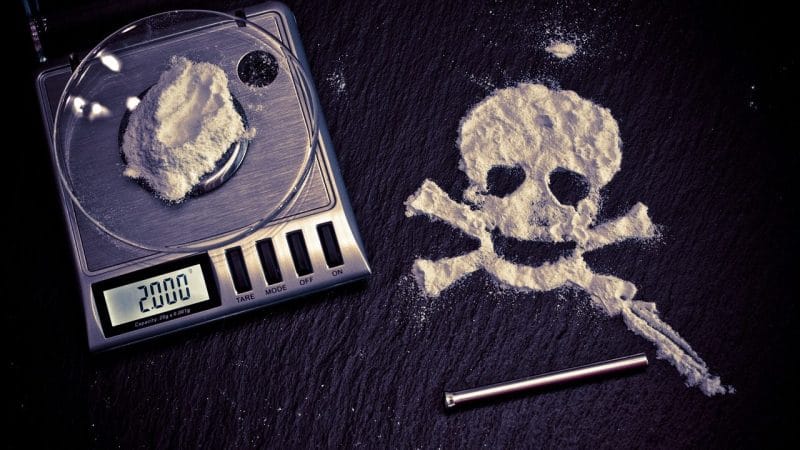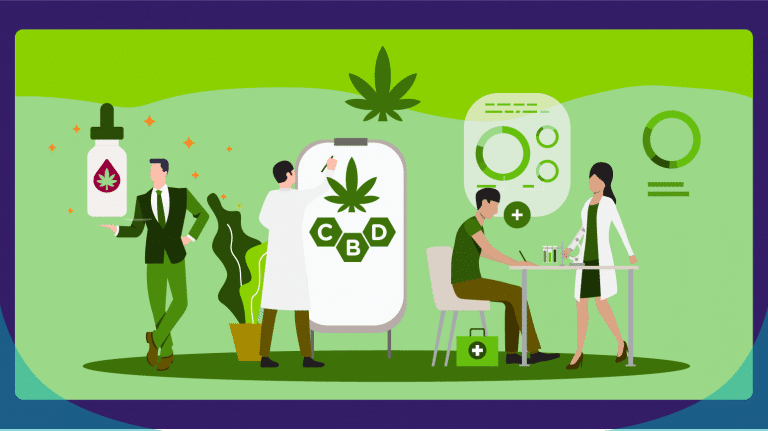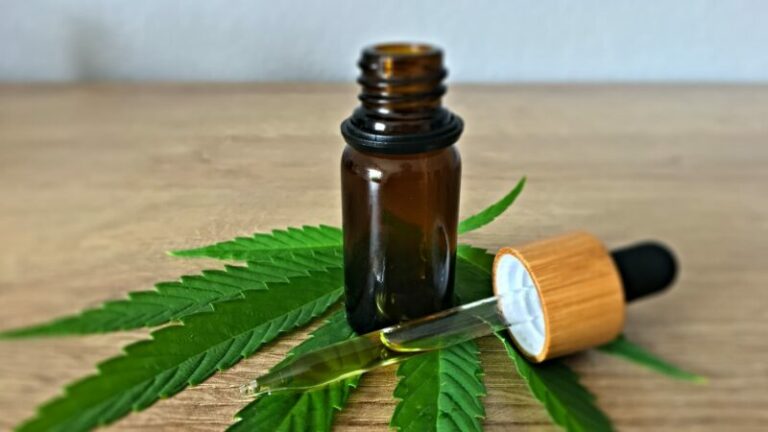31 War On Drugs Statistics & Facts That Are Hard to Believe

Ever since the war on drugs started in the USA 50 years ago, there has been a lot of debate over its success and effectiveness. And although some may justify it even today, war on drugs statistics tell a different story.
No one can dispute that some illicit drugs are harmful and that drug addictions and overdose are real issues in today’s society. However, what stats and facts show is that a policy based on scare-tactics and tough-on-crime actions is not effective, and the coronavirus epidemic has made everything worse.
In fact, more often than not, it can have the reverse effect. On the other hand, legalization and a more liberal approach have been proven to be much more successful in many countries across the world and in several US states.
Top Ten War on Drugs Statistics in 2022
- Drugs were first introduced in the USA in the 1800s.
- The Marijuana Tax Act was introduced in 1937.
- Nixon launched the war on drugs in June 1971.
- At the moment, 456,000 people are serving their time having been charged for drugs.
- The House of Representatives passed the historic MORE Act on December 4, 2020
- 545,602 Americans were arrested for crimes related to cannabis in 2019.
- The federal drug control budget in 2020 was $35.60 billion dollars.
- Heroin positivity rates jumped by 44% amidst the coronavirus pandemic.
- Portugal decriminalized drugs in 2001.
- There are around 100 SIFs across the world in use today.
The War On Drugs Timeline
Here’s a bit of history on the war on drugs, and how it all began.
1. Drugs were first introduced in the USA in the 1800s.
(History)
Medicinal and recreational drug use has been present in the USA since the country was founded. In fact, in the 1890s, a small amount of cocaine was sold for $1.50 in catalogs of popular department stores.
2. According to the war on drugs facts, cannabis was introduced in the United States Pharmacopoeia in 1850.
(ACS)
As marijuana statistics show, cannabis was used to treat a variety of ailments, from gout and rheumatism to tetanus and cholera. It was listed as a legitimate medication in the United States Pharmacopoeia until 1942.
3. The Federal Government passed the Harrison Narcotic Act in 1914.
(FDA)
The Harrison Narcotic Act was introduced in 1914, and it was the first federal drug policy that restricted the use, distribution, manufacturing, and sale of morphine, heroin, cocaine, and marijuana.
4. The Marijuana Tax Act was introduced in 1937.
(History)
When did the war on drugs start? Although it didn’t dispute its medicinal properties, the Act introduced heavy penalties, such as $2,000 fines and five-year prison sentences. This is considered to be the beginning of the war on marijuana.
5. Nixon launched the war on drugs in June 1971.
(Britannica)
Detailed data on Nixon’s war on drugs suggest that the President officially started the modern-day war by increasing funding for drug-control agencies and treatment facilities.
6. Facts about the war on drugs show that from 1973 to 1977, there were eleven states that decriminalized cannabis possession.
(History) (Schaffer Library of Drug Policy)
Even though at the time it was estimated that 35 million Americans were occasional pot-smokers, including the sons of President Carter, the legislation to decriminalize marijuana was stuck in committees and was never realized.
7. Almost 5.8 million people in the USA stated that they used cocaine in 1985.
(History)
United States war on drugs statistics reveal that crack was the main culprit for the increase in cocaine-addicted Americans. It’s an extremely addictive substance and considered relatively cheap. This was the beginning of the crack epidemic that shook the USA from the early 1980s and lasted for almost a decade.
8. Ronald Reagan’s term in office started in 1981 when the war on drugs reached its peak.
(Britannica)
President Reagan’s focus on tough policies and zero tolerance led to mass incarceration in the US for non-violent drug offenses. There was a huge discrepancy between the number of African Americans and prisoners of other races. This is also the beginning of the “Just Say No” campaign.
9. War on drugs statistics worsened when the Antidrug Act of 1986 established mandatory sentencing of 100:1 ratio of powder cocaine to cocaine base.
(Britannica)
In other words, this was an utter failure, given that 5 grams of crack resulted in a minimum of five years in prison, while 500 grams of powder cocaine led to the same sentence. At that time, the social belief was that cocaine base, or crack, was more closely associated with addiction and potential abuse. And since around 80% of crack users were African American, this Act led to growing incarceration rates by race. Consequently, the US had the highest incarceration rate in the whole world.
The crack vs. powder cocaine ratio wasn’t reduced to 18:1 until 2010 with FSA (Fair Sentencing Act).
10. War on drugs statistics in the 1980s show that 2–6% of Americans saw drug abuse as the nation’s “number one problem.”
(Drug Policy Alliance)
By September 1989, this percentage increased to an incredible 64%, thus making it one of the most intense fixations in the whole US history if we look at polling analyses. It was fueled by the political hysteria regarding substance abuse but plummeted the next year.
11. The number of US adults who saw drugs as a concern dropped to less than 10% at the start of the 1990s.
(Drug Policy Alliance)
According to statistics on the war on drugs, people started to lose interest in the government-led actions, mostly as a result of less intense media coverage. However, the draconian policies enforced by the government, which created a racial divide and led to countless arrests and incarcerations, remained in effect.
12. President Obama granted clemency to 330 federal prisoners convicted of drug crimes.
(Chicago Tribune)
Obama also stated he would like to treat cannabis as a public health issue, like alcohol or tobacco consumption. Although some of the changes fell short, war on drugs statistics show they were still a step in the right direction and showed a shift towards more sensible drug policies.
13. The House of Representatives passed the historic MORE Act on December 4, 2020.
(Arnold & Porter)
The “Marijuana Opportunity, Reinvestment, and Expungement Act of 2020” could be the beginning of legalization. This is the biggest step in trying to question marijuana’s Schedule I classification in the last 50 years.
Schedule I drugs include LSD, heroin, and substances with “a high potential for abuse” and “no accepted medical use in treatment in the US.” On that note, Schedule I substances are only allowed to be used for federal government research studies.
War On Drugs Incarceration Statistics
How many people were arrested due to drug violations in the US?
14. 545,602 Americans were arrested for crimes related to cannabis in 2019, which is more than the total number of arrests for violent crimes.
(Forbes)
For comparison, in the same year, 495,871 people were arrested for violent crimes. Drug arrests statistics from 2019 report that 92% of those arrests were for nothing else but cannabis possession.
15. 6% of state prisoners were drug offenders in 1980 but the number rose to 21% by 1998 .
(Human Rights Watch)
Experts agree that there is no greater force behind growing US incarceration rates in the 1980s than the war on drugs.
16. Drug incarceration statistics tell us 456,000 people are serving their time having been charged for drugs.
(Daily Cal) (Center for American Progress)
That’s one-fifth of the total prison population.
Each year, 1.25 million Americans are arrested on the account of drug possession. Data on how many people are in prison in the US shows that American jails hold 2.3 million people. In fact, someone is arrested in America for drug possession every 25 seconds.
17. About 80% of those incarcerated on federal drug charges are people of color and Latino.
(Center for American Progress)
In state prisons, 60% of all people convicted on drug charges are African Americans, as the war on drugs statistics by race reveal.
18. African Americans make up 29% of people arrested on drug offenses.
(Drug Policy Alliance)
Information on the prison population by race suggests that African Americans also account for 40% of all drug offenders in federal jails. This is rather worrying as they comprise only 13% of US citizens.
On top of that, it is estimated that the average black defendant will serve approximately the same amount of time for a drug offense as a white person might for a violent crime.
19. The federal drug control budget in 2020 was $35.60 billion dollars.
(Statista)
This is a little less compared to 2019. The funds were used on prevention, treatment, law enforcement activities, and international counternarcotics, war on drugs cost statistics suggest. The requested budget for 2021 is $35.69 billion.
20. Overdose is the leading cause of death among individuals released from prison.
(Safety and Justice Challenge)
Rather than solving the issue of drug abuse, prison sentences make it worse. Data indicated that prisoners fresh out of jail are 40 times more at risk of dying from an overdose during the first two weeks outside. The overdose death rates are similar among White Americans, Native Americans, and Black Americans.
War on Drugs Today
What is the situation in the US at the moment and what can we expect in the future?
21. During the pandemic, 9% of American adults admitted having consumed cocaine.
(Recovery Village)
Based on the Recovery Village survey conducted on 1,000 18+ US adults, 88% used alcohol to deal with the “new normal,” 37% used marijuana, and 15% took prescription opioids.
While over half of the surveyed used said substances to help them deal with stress, 39% did it because they were feeling bored. Learning a vape trick of two could’ve solved that problem easily.
22. More than 81,000 Americans died from a drug overdose within a 12-month period.
(CDC)
Another argument for the war on drugs failure is this one. It seems like only the incarceration and death rates are going up, instead of down.
The highest increase (by 38.4%) in overdose death rates were among people who used synthetic opioids (Fentanyl, Methadone, Carfentanil, Tramadol). In addition to that, cocaine overdose death rates witnessed a growth of 26.5%. The COVID-19 pandemic is also observed as one of the possible contributors to grave statistics.
23. War on drugs facts and figures show an increase in heroin positivity rates by 44% amidst the coronavirus pandemic.
(National Law Review)
The research included 872,000 de-identified lab results from all states. Compared to the pre-covid era, in 2020, drug positivity rates had substantial growth in (non-prescribed) fentanyl usage, by 35%, and in heroin usage, by 44%. The rates for non-prescribed opioids also witnessed a growth in numbers by 10%.
24. Colorado has made over $2 billion in sales from the legal marijuana industry in 2020.
(Colorado.gov)
This one adds to the war on drugs statistics that show how futile it is. Since Colorado legalized marijuana in 2014, Colorado has made a total of $9.79 billion in sales revenue from cannabis.
25. Recreational use of cannabis is now legal in 15 states and the District of Columbia.
(Esquire)
Vermont was the first state to legalize cannabis possessions via its legislature. Legalization instead of punishment is one of the ways governments can go about ending the war.
So far, recreational cannabis is legal in Alaska, Arizona, California, Colorado, District of Columbia, Illinois, Maine, Michigan, Massachusetts, Maine, Montana, New Jersey, Oregon, Nevada, South Dakota, Vermont, and Washington.
War On Drugs Stats & Facts Across the World
What is the war on drugs situation in the world?
26. Mexico is the second country on the American continent that militarized the war on drugs.
(Washington Post) (Statista)
Since its deployment of the military to stop the drug war, it is estimated that over 250,000 people have been killed in drug-related violence and 40,000 have disappeared. In 2019 alone, 23,393 died in homicides related to organized crime.
27. Duterte war on drugs statistics indicate a 50% increase in “drug war” killings in the first months of the COVID-19 pandemic.
(HRW)
Ever since Rodrigo Duterte became the president of the Philippines, the police have killed about 8,000 drug suspects and over 160 political activists. Some estimates suggest the real figure is three times larger.
28. Cambodia’s war against drugs began in 2017 and resulted in increasing the prison population by 78%.
(Amnesty)
Cambodia’s war on drugs campaign was started in 2017 by Hun Sen, Cambodia’s prime minister, who was encouraged by Duerte. Cambodia’s war on drugs statistics report that since the start of this campaign, there has been a gigantic growth within the prison population of 78%. In other words, more than 38,990 people were arrested, mostly on possession charges, and continually abused and molested in prison.
29. There are around 100 SIFs across the world in use today.
(BBC)
Supervised injection facilities (SIFs) are one of the ways to end the war on drugs. Statistics have proven that these sites effectively reduce the number of overdoses and risks of HIV infections.
They can currently be found in Canada, Australia, and Europe, while several US cities, such as Philadelphia, are considering opening SIFs.
30. Ending the war on drugs has great success stories: Portugal decriminalized drugs in 2001.
(Equal Times)
Although it still treats drug dealers and traffickers as criminals, drug users are treated as patients. This Act has contributed to a considerable decrease in HIV and hepatitis patients and drug-related crime as well.
31. Uruguay became the first country to legalize the growing, sale, and smoking of cannabis in December 2013.
(LatinAmerican Post)
Cannabis is sold at $1.30 per gram in pharmacies, much lower than the $4 per gram on the illegal market. Authorities estimate that legal cannabis consumption will be twice as high as the illicit amount seized by the police, proving that legalization provides far better results than strict policies.
Conclusion
Was the US war on drugs a success? As the war on drugs statistics show, the answer is a resounding “No.” What it has accomplished is making America the leading country in the world in terms of incarceration rates and creating social and racial discrimination that is not eradicated to this very day.
FAQs
When did the war on drugs start and end?
America’s war on drugs started in June 1971 but it is still raging in a way. Over four decades ago, President Richard Nixon called for a war on drugs, leading an initiative aimed to stop illegal drug use, distribution, and trade by introducing stricter punishments for offenders.
The consequences of the policies were especially disastrous for persons of color, who were discriminated against and targeted by the criminal justice system. The consequences are felt even today as cannabis is still illegal and imprisonment rates are super high.
How much does the US spend on the war on drugs?
The US spends about $30 billion on federal drug control each year. So far, the highest figure was in 2019 — $36.80 billion. The figures for 2020 are still calculated, but the original demand was $35.60. As for the ongoing year, an amount of $35.69 was requested.
Since its inception, the war on drugs has cost the US some $1 trillion.
How the war on drugs affected incarceration rates?
The war on drugs has massively increased incarceration rates, regardless of the country. 2.3 million Americans are currently locked down in one of the facilities. Thus, the US has the largest number of prisoners per 100,000 citizens — a staggering figure of 698 inmates per 100,000 people.
Drug arrests statistics from 2020 suggest that the government should reconsider the sentences for drug offenders, invest money in community drug treatment, etc.
Is marijuana a narcotic?
No, it is not. Let’s deal with some definitions.
Firstly, a narcotic is an old name for an opioid. At the moment, marijuana or cannabis is not considered an opioid, but a drug, and you will often find articles on the topic of whether marijuana can replace opioids due to its many benefits.
Are we going to have a Joe Biden war on drugs campaign in 2021?
No, definitely not. The newly elected US president, Joe Biden, known for his war on drugs fights, promised to decriminalize marijuana. Given that 68% of Americans support legalization, this could become a reality in the near future.
However, according to the author of the book Marijuana: A Short History, John Hudak, there are two possible scenarios. Congressional Democrats could put a line or two into the criminal justice bill, making it impossible for Joe Biden to put a veto on it, or Kamala Harris could pressure Biden to make a public stance or take action.





